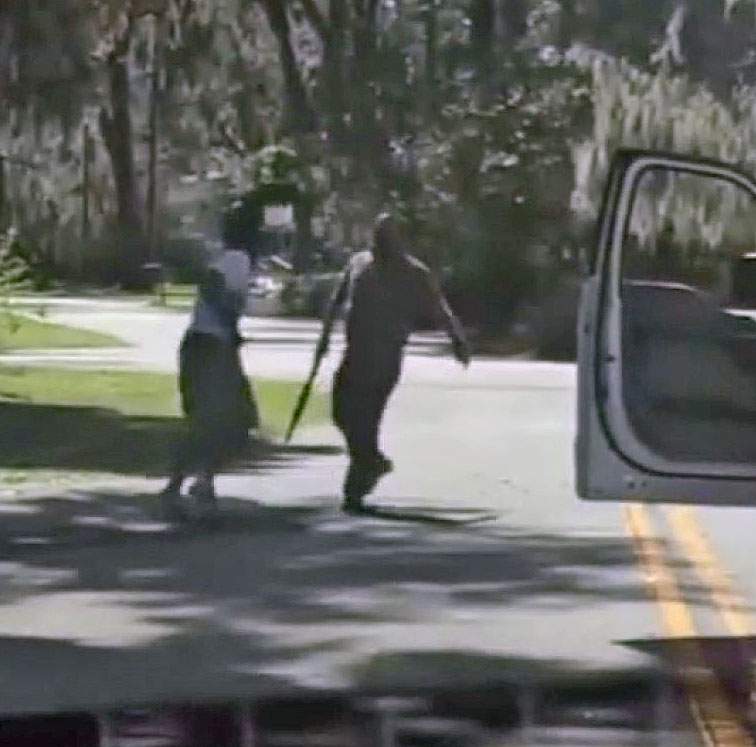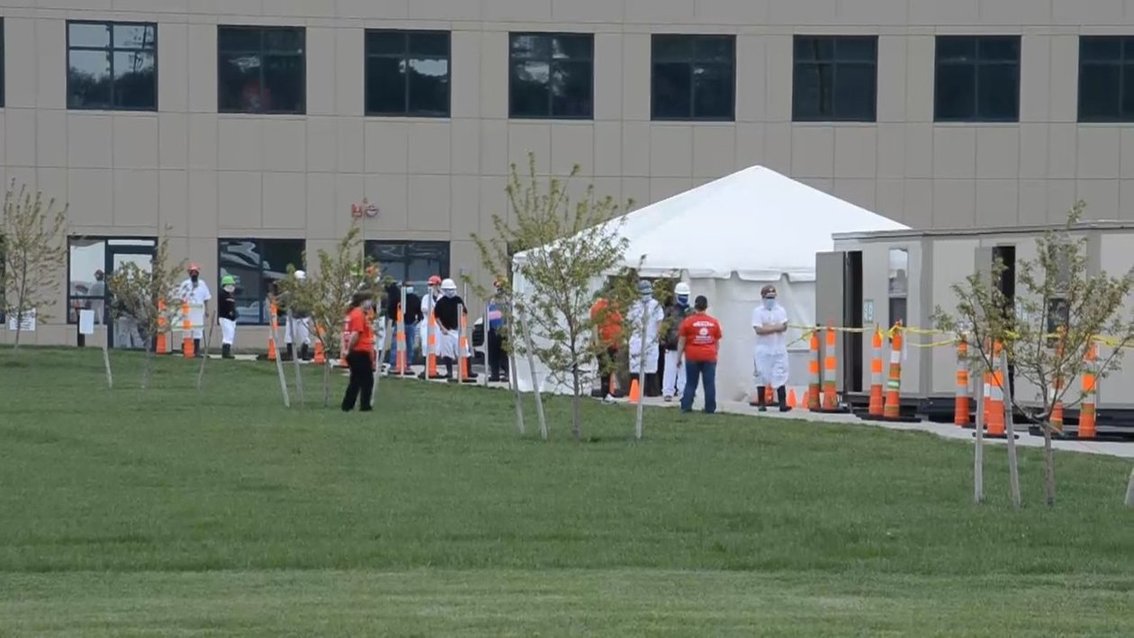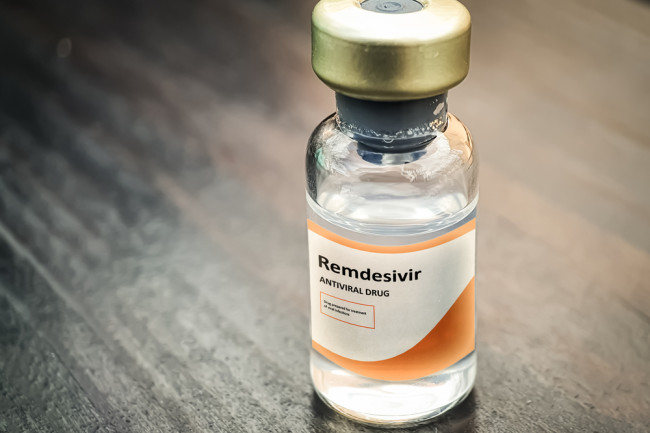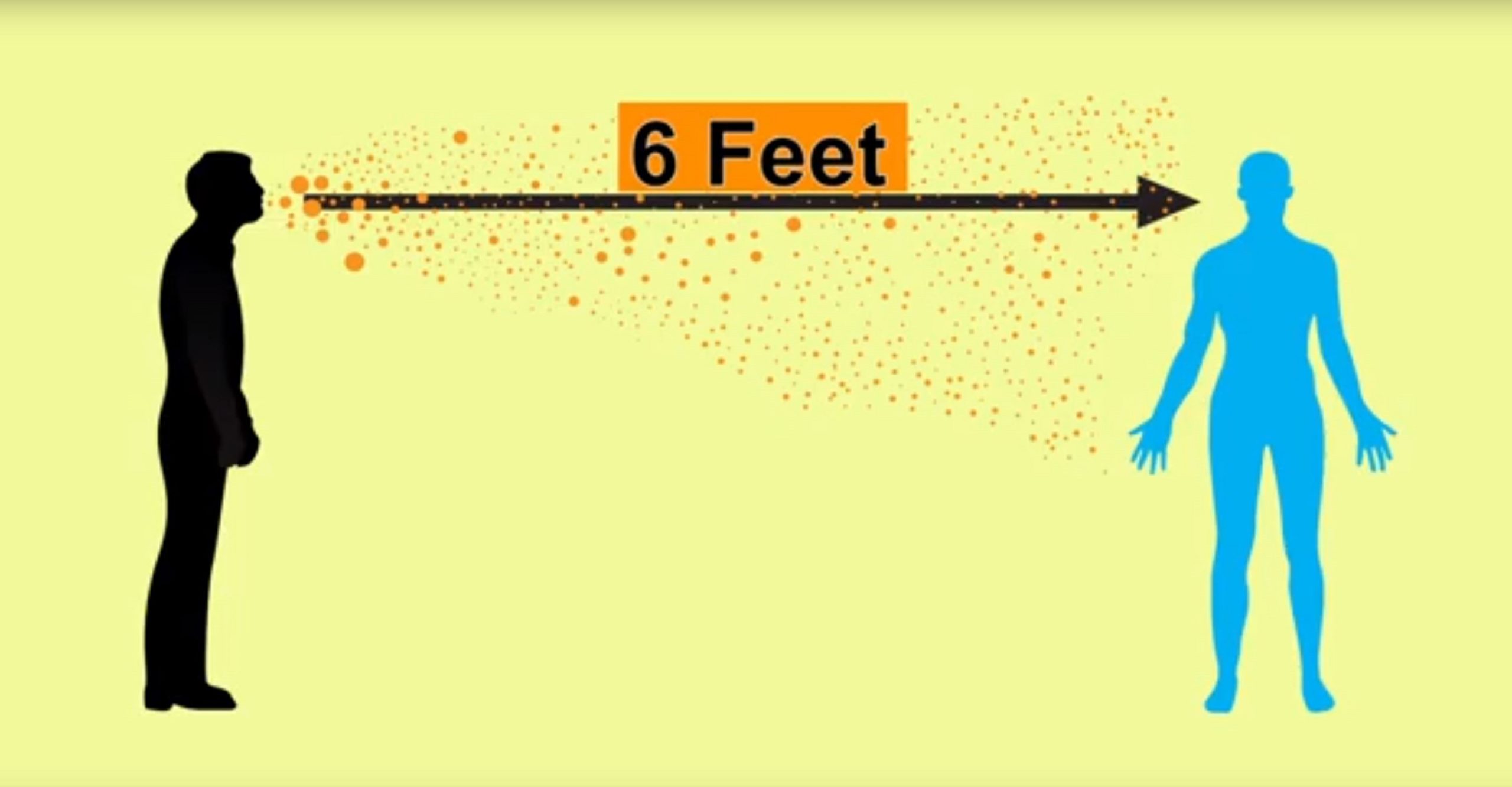
Two months after the February shooting death of 25 year old Ahmaud Arbery, and just two days after video of the shooting was released to the public, the two men who gunned him down while he was jogging were arrested and charged for murder. The men, Gregory McMichael, 64, and his son Travis McMichael, 34, were each charged with murder and aggravated assault and booked into a jail in coastal Glynn County, Ga., where the killing took place. The Georgia Bureau of Investigation, in a news release, stated that it was Travis McMichael who shot and killed Mr. Arbery on Feb. 23.
The details of Mr. Arbery’s killing — and the fact that no one had been arrested in the months since it happened — led to a wave of outrage nationwide. Public pressure for an arrest intensified with the release of the video. The video of the shooting, taken from inside a vehicle, shows Mr. Arbery running along a shaded two-lane residential road when he comes upon a white truck, with a man, Travis McMichael, standing beside its open driver’s-side door with a rifle in his hand. Gregory McMichael is standing in the bed of the pickup. Mr. Arbery runs around the other side of the truck to avoid Travis McMichael. As Travis approaches the front of his truck, muffled shouting can be heard before Arbery emerges, tussling with the man outside the truck as three shotgun blasts echo.
It’s during this struggle that Arbery was shot a point blank range by Travis McMichael. Arbery then attempts to run away but collapses face down in the street. Gregory, a retired Glynn County police officer, and his son Travis both claim they were trying to make a citizen’s arrest when they followed Arbery after seeing him enter a home under construction 2 doors down from their home. They said he fit the description of a suspect in break-ins and burglaries in the area despite no reports of any in the neighborhood.
The owner of the home said nothing has ever been taken from the property but people have entered before. He released dozens of surveillance videos of people entering the property including one of Arbery from minutes before he was shot. Arbery was inside the home for less than 3 minutes looking around before he exits to continue his run. The additional videos show many other people entering the property to look around, including neighborhood kids and a couple who entered the same day Arbery was killed but no other trespassers were confronted.
The Georgia Attorney General Christopher M. Carr formally requested the intervention of the FBI in the case to investigate the killing after there were reports that Brunswick Judicial Circuit District Attorney Jackie Johnson said that no arrests should be made in the case and recused herself from further involvement in the case because Gregory McMichael had previously worked as an investigator in her office. The GBI found probable cause to charge Gregory and Travis McMichael within 36 hours of taking the case, and, on May 7, arrested the pair on charges of felony murder and aggravated assault. The McMichaels were booked into the Glynn County Jail and were denied bond the following day.
Georgia Attorney General Chris Carr announced he asked the Georgia Bureau of Investigation and federal authorities to look into how local prosecutors possibly held crucial evidence of Arbery’s killing and refused to make arrests, as more than two months passed before the attackers were arrested. The Brunswick police reportedly had a copy of the shocking video but no arrests were made until 2 days after it was released to the public by a lawyer the McMichaels consulted with but did not retain.
Read more

As many states slowly reopen, a pair of studies predict the COVID-19 outbreak is set to become far deadlier in the United States. A draft Federal Emergency Management Agency report forecasts that daily coronavirus deaths in the United States would rise to 3,000 people a day by June 1 — that’s a 70% increase over the current figure. Separately, the Institute for Health Metrics and Evaluation at the University of Washington estimates the U.S. death toll will reach around 135,000 by August in the United States.
The U.S. death toll from the coronavirus outbreak has topped 75,000 and is projected to keep rising in the coming weeks. The official coronavirus death toll worldwide has topped a quarter of a million, with over 3.6 million confirmed cases. The United States makes up close to one-third of confirmed cases and a quarter of known deaths, even though it represents less than 5% of the world’s population.
Over half of U.S. states have relaxed, or are preparing to loosen, social distancing and other restrictions but it has not been a smooth transition. In Georgia, more than 120 Atlanta restaurants have refused to open, saying it is not safe to do so despite Georgia Governor Brian Kemp’s lifting of the state’s shelter-in-place order. In Miami Beach, the governor had to close a popular park — just five days after reopening it — after thousands failed to adhere to new rules requiring social distancing and wearing a face mask.
Meanwhile, we continue to learn more about the virus globally as scientists and doctors try to create a vaccine. A French hospital says they treated a COVID-19 patient as early as December — a month before the government confirmed its first cases. A preliminary new study finds the novel coronavirus that first emerged in China mutated in Europe in February to become more contagious, speeding its spread around the globe. The authors of the study said they released their findings early so that people working on vaccines could see their results.
US Researchers say the novel coronavirus silently spread in the United States earlier than previously thought as well, infecting tens of thousands of people in New York and other major cities before the first US case was confirmed on January 21. A new model by the Network Science Institute at Northeastern University in Boston shows the first infections came from China in early or mid-January, and that the virus went undetected because many people were not presenting symptoms or were misdiagnosed because US doctors had not seen the virus first hand yet.
The model suggests that while Americans were still focused on China, about 28,000 people in major cities — such as New York, San Francisco and Seattle — were infected by March 1. Santa Clara County officials announced that tissue samples confirmed two people who died in early February tested positive for coronavirus. That month, a number of physicians saw patients, without travel histories, who had flu-like symptoms.
Several states, including California and Indiana, have been retracing their coronavirus timelines after discovering that the highly infectious disease started killing people earlier than previously known. These discoveries have emphasized just how much about this pandemic remains unknown. Four months since the novel coronavirus was first discovered in Wuhan, China, experts worldwide still do not fully understand how the virus started, how it impacts the body or what treatments are effective.
Read more

Canada is banning military-style assault firearms, including the AR-15, two weeks after a gunman in Nova Scotia killed 22 people during a 12-hour rampage — the worst mass shooting in Canadian history. A domestic assault late Saturday night is suspected to be the catalyst of the Nova Scotia shooting rampage that left 22 people dead. The rampage began in the quiet town of Portapique on Cobequid Bay began after the gunman assaulted his longtime girlfriend. Police said Gabriel Wortman, 51, led police on a miles-long manhunt across the Canadian province. He died after a confrontation with police. He was wearing a RCMP uniform and drove what appeared to be a police cruiser.
When Prime Minister Justin Trudeau announced the ban he said “We are closing the market for military-grade assault weapons in Canada. We are banning 1,500 models and variants of these firearms by way of regulations. These weapons were designed for one purpose and one purpose only: to kill the largest number of people in the shortest amount of time. Families of the victims deserve more than thoughts and prayers.” Family and friends of the victims have said that an emergency alert by police could have prevented some deaths. Police on Wednesday admitted that they failed to issue a timely alert to the public. Police learned about the gunman’s attire and vehicle from his girlfriend after 7 a.m. but the formal process for issuing an alert still took several hours to make its way up the chain of command. Nearly three hours after they learned the identity of the suspect, an alert had still not been issued. Prime Minister Justin Trudeau said the failure to issue an alert would be part of a larger investigation.
Police believe a domestic assault triggered the shooting spree. The couple returned home after arguing at a nearby party shortly before 10pm, where Wortman attacked his girlfriend and she fled into the woods to hide. Wortman then set his house on fire and returned to the party where he opened fire, killing seven people. The first 911 calls reporting gunshots were made at 10:01pm. When officers arrived on the scene at 10:26pm, they discovered thirteen victims who had been shot and killed both inside and outside of eight homes on Orchard Beach Drive and Portapique Beach Road, three of which were burning. Police said many had died while trying to escape the flames or in helping other victims. Wortman also shot and injured two dogs.
Police initially believed the killings were confined to the area and ordered a lock down. But the rampage, which spanned 16 locations, continued, with the gunman killing nine other people over several hours, police said. Wortman’s injured girlfriend emerged from the woods several hours after the first shooting deaths, just after 7am Sunday. She is still recovering from serious injuries but provided police key information about the gunman including a description of him, that he was impersonating an officer and a possible list of targets.
During his rampage, Wortman arrived at a home of acquaintances and killed the two occupants, as well as a neighbor who came to help. After setting the house on fire, police say he pulled over two vehicles and killed the occupants. He also shot and killed a woman walking along the road. Sometime before 10:49am, Wortman pulled alongside RCMP Constable Chad Morrison’s cruiser on Route 2 in Shubenacadie. Morrison had planned to meet fellow officer Heidi Stevenson at that location. Wortman shot into the car, injuring Morrison, who drove to a nearby hospital after reporting Wortman’s location.
As Wortman fled the scene, he collided head-on with Stevenson. Stevenson engaged Wortman, who shot and killed her, before taking her sidearm and ammunition. He also set both cars on fire and killed a nearby motorist who stopped to help. He then stopped at the home of a woman he knew and killed her before stopping for gas. Wortman was recognized by a RCMP officer at the gas station and was fatally shot.
Read more

In St. Joseph Missouri, 422 workers at a Triumph Foods pork plant have tested positive for the coronavirus and all of them were asymptomatic, according to state health officials. After nearly three dozen workers at the plant became infected last month, the Missouri Department of Health and Senior Services tested all asymptomatic workers at the plant from April 27 to May 1. The testing found that 422 of 2,367 workers tested positive despite showing no symptoms.
Those workers have been advised to self-isolate for 10 days before returning to work, according to federal health guidelines. The plant remains open, along with a mobile testing site operated by Northwest Health Services. The company just confirmed that one employee, a man in his 40s with underlying health issues has died of Covid 19. The company said he was one of the first workers to be tested and had not returned to work since April 21.
“While individuals tested during this initiative did not show COVID-19 symptoms, lab results received thus far indicate that around 17% tested positive for the virus. Of all the positive test results received thus far, over 90% have been collected from asymptomatic people,” explained Mark Campbell, CEO of Triumph Foods. Employees with positive results were notified and asked to self-isolate. The state health department began tracing measures and have confirmed that nearly 200 people were infected with Covid 19 by some of the asymptomatic Triumph workers. Meanwhile, the state continues to work to contact trace the affected employees and now those they have infected as well.
Missouri Governor Parsons issued a state wide stay at home order on April 6th yet the asymptomatic employees still infected almost 200 people in the counties they live in. Kansas City and Wyandotte County, where the new cases were confirmed, have been under stay at home orders issued by Mayor Lucas since March 24. Despite those orders being issued first and ending later than the state wide order, they still had a spike in cases due to the outbreak at Triumph Foods.
Outbreaks have become common at other meat plants across the U.S., infecting thousands of workers, leading to the closure of some plants and prompting meat shortages. Several big grocery chains this week were restricting customer purchases of meat, and Wendy’s was unable to serve hamburgers at some locations due to shortages. Other packing plants are beginning to test all employees like Triumph Foods, which industry leaders say is critical to assure employees that it’s safe to go back to work and to grow data sets to show how the virus works.
For most people, the coronavirus causes mild or moderate symptoms that clear up after two to three weeks. For some, especially older adults and people with existing health problems, it can cause more severe illness, including pneumonia. Because the virus is still circulating through the community, it’s important to maintain social distancing, mask wearing and hand-washing, even after stay-at-home orders are lifted.
Dr. Aamina Akhtar, Mercy Hospital South chief medical officer and an infectious disease specialist said “The next two to three weeks will be telling, and will really give us an idea whether human actions will lead to an increased number of cases. Our actions today will affect the community around us. It’s a big social responsibility and I hope we are ready.”
Read more

The Food and Drug Administration (FDA) announced the emergency use authorization for the antiviral drug remdesivir, after preliminary results from a federal trial showed the drug could speed recovery in patients infected with the coronavirus. The finding, which has not yet been peer reviewed, came after another study found no benefit for the drug in severely ill patients in China. The new results suggest a moderate improvement in the death rate of patients taking remdesivir, whose hospital stays were shortened, on average, from 15 days to 11.
The issuance of an EUA is different than FDA approval. In determining whether to issue an EUA, the FDA evaluates the available evidence and carefully balances any known or potential risks of any unproven products with any known or potential benefits of making them available during the emergency. Based on evaluation of the emergency use authorization criteria and the scientific evidence available, it was determined that it is reasonable to believe that remdesivir may be effective in treating COVID-19, and that, given there are no adequate, approved, or available alternative treatments, the known and potential benefits to treat this serious or life-threatening virus currently outweigh the known and potential risks of the drug’s use.
The emergency use authorization (EUA) allows for remdesivir to be distributed in the U.S. and administered intravenously by health care providers, as appropriate, to treat suspected or laboratory-confirmed COVID-19 in adults and children hospitalized with severe disease. Severe disease is defined as patients with low blood oxygen levels or needing oxygen therapy or more intensive breathing support such as a mechanical ventilator.
The EUA requires that fact sheets that provide important information about using remdesivir in treating COVID-19 be made available to health care providers and patients, including dosing instructions, potential side effects and drug interactions. The EUA is temporary and will be effective until the declaration that circumstances exist justifying the authorization of the emergency use of drugs and biologics for prevention and treatment of COVID-19 is terminated. It may be revised or revoked if it is determined the EUA no longer meets the statutory criteria for issuance.
Possible side effects of remdesivir include increased levels of liver enzymes, which may be a sign of inflammation or damage to cells in the liver; and infusion-related reactions, which may include low blood pressure, nausea, vomiting, sweating, and shivering.
The top coronavirus task force scientist Dr. Anthony Fauci welcomed news of the first potential treatment for COVID-19. The U.S. government will coordinate the donation and distribution of remdesivir to hospitals in cities most heavily impacted by COVID-19. Given the severity of illness of patients appropriate for remdesivir treatment and the limited availability of drug supply, hospitals with intensive care units and other hospitals that the government deems most in need will receive priority in the distribution of remdesivir.
Read more

Many Governors across the US are ending stay at home order- many of which have been in place for over a month. Reopening states to business is a difficult and controversial topic. Should states reopen too early, coronavirus cases may spike again, undoing the good social distancing did for weeks. Should they continue to stay closed, small businesses across the state may never recover and fiscal crises could severely damage many states.
Here are the states with orders set to expire:
Alaska Gov. Mike Dunleavy allowed nonessential businesses to reopen for regular business hours, with varying restrictions by sector, on April 24. Many travel and fishing restrictions have also been lifted. Alabama Gov. Brian Kemp said businesses like gyms, hair salons and barber shops could open on April 24 with theaters and restaurants reopening on April 27. Arkansas Gov. Asa Hutchinson never put an official stay-at-home order in place and has announced he hopes to ease some closures on May 4 with an announcement on when restaurants can accept dine-in customers on April 29.
Colorado’s stay-at-home order expired on April 27, moving to a new phase which allows retail businesses to do curbside pickup, other businesses can reopen with medical precautions and elective surgeries may resume. Businesses such as salons, dog groomers, personal trainers and elective medical services will be allowed to open May 1. On May 4, offices may reopen with 50% capacity.
Idaho Gov. Brad Little announced his plan to reopen the state beginning on May 1 and proceeding with four steps through June 13. The first phase would allow most retail establishments and places of worship to reopen, subject to strict social distancing guidelines. Indiana Gov. Mike Holcomb said elective surgeries may resume April 27 and he planned to lessen restrictions in early May.
Iowa has not had a stay-at-home order since April 20 and Gov. Kim Reynolds lifted the ban on nonessential surgeries beginning April 27. Kansas Gov. Laura Kelly said she is moving forward with the goal of reopening the state on May 3 if crucial guidelines are in place. Minnesota Gov. Tim Walz has projected May 4 as a reopening date.
Missouri Gov. Mike Parson is not extending the state’s stay-at-home order, set to expire on May 4. On that day, all businesses may reopen following social distancing guidelines. The mayors of Kansas City and St Louis have stay at home orders with end dates of May 15, which will supersede the state wide order and remain in effect for several counties. Montana Gov. Steve Bullock said the state’s stay-at-home order will be expire on May 3rd and certain nonessential businesses can begin to reopen beginning April 27.
Ohio’s stay-at-home order will expire May 1. Health procedures that do not require an overnight stay in the hospital may resume as well as dental and veterinary services. On May 4, manufacturing, distribution, construction and office work can resume with increased distancing and other health measures. On May 12, retail and other services may resume. Besides that, the stay-at-home order remains in place and gatherings are still limited to fewer than 10 people.
Oklahoma will lift restrictions on barber shops, nail salons, spas, elective surgeries and state parks on April 24. Movie theaters, gyms and restaurants will be allowed to reopen May 1. Pennsylvania Gov. Tom Wolf announced a phased reopening set to begin on May 8. Tennessee’s stay-at-home order would expire on April 30.
On May 1, Texas will allow retail stores, restaurants, movie theaters, malls and museums and libraries to operate at 25% capacity. However in rural counties with few cases, businesses can operate at 50% capacity. The target date for Phase 2 is May 18. Washington Gov. Jay Inslee released a plan to reopen businesses no earlier than May 4 on contingencies of a slowing of the spread of the virus.
Delaware, District of Columbia, Louisiana, Maine, Michigan, New Mexico, South Carolina, Virginia and Vermont have orders set to expire on May 15. New York will also reopen portions of the state on May 15. Connecticut’s stay at home expires on May 20. Wisconsin’s order will expire on May 26. Hawaii’s order will expire on May 30. California, New Jersey, Utah and West Virginia have no end dates to their orders.
Read more

The coronavirus outbreak has hit workers in the food processing industry hard, with meatpacking plants reporting explosions in coronavirus cases. In Sioux Falls, South Dakota, a Smithfield Foods pork processing plant that employs 3, 700 people closed down indefinitely after the mayor put pressure on the CEOs to shut down for two weeks as the virus continued to spread through the plant.
The mayor spent two weeks asking them to shut down to no avail with daily reports of more workers becoming infected. He finally forced their hand by releasing a letter, signed by the governor, requesting that the plant shut down and released it to the press. At the time of the closure, the plant had 238 workers that tested positive. Now, just 3 weeks after their first worker tested positive, there are more than 700 workers who are confirmed to have Covid 19 and another 143 infections that were traced to them. The number of confirmed cases from the Smithfield plant represent 55% of the states’ cases.
Cargill Meat Solutions, a 900-worker plant in Hazleton, Pa., that packages meat in plastic for supermarket shelves in Pennsylvania and surrounding states, shut down temporarily as 130 hourly workers have tested positive for COVID-19 and a rash of employees called out sick. Three other Pennsylvania plants closed due to the virus. According to a union rep, JBS Beef in Souderton, CTI Foods hamburger-grinding plant in King of Prussia and Empire Kosher Poultry Inc. in Mifflintown are all closed amid outbreaks among employees. A 70-year-old union steward at the JBS Beef slaughterhouse in Souderton died on April 3 from respiratory failure brought on by the pandemic virus.
Meat-processing plants across several other states including Colorado, Iowa, and Nebraska are reporting COVID-19 outbreaks. A federal food inspector in New York died from the disease last month. Some companies are temporarily closing to sanitize facilities while also boosting hourly pay and offering bonuses to workers in an “essential” industry. Cargill said it would reopen its Hazleton plant as soon as it is safe. In late March, Cargill and the United Food and Commercial Workers negotiated a $2 per hour raise for shifts worked between March 23 and May 3. JBS Beef employees will be eligible for a one-time $500 bonus on May 15.
The World Health Organization, the U.S. Food and Drug Administration, and the Centers for Disease Control and Prevention say COVID-19 cannot be spread through food. It’s an “unstable virus” that is mostly spread through sneezing and person-to-person contact. Stomach acids also mostly neutralize the virus if it’s eaten as well.
Read more

As countries impose lengthy lockdowns to combat the spread of the coronavirus, reported cases of domestic abuse have spiked around the world. In the weeks since populations worldwide have been directed to “stay home” to prevent the virus’s spread, cases of domestic violence have surged — and that’s reported cases. Women who are victimized are now confined to isolated homes with abusive partners whose coercive and physically violent tendencies are enabled and further inflamed by economic stressors. Supportive community ties are severed, while emergency services, shelter systems, and social services are overwhelmed and congenitally underfunded.
Millions of Americans are not safe from violent abuse at home and now the federal, state and local governments are telling everyone to stay home – for their own safety. For some people, going to work may be their only reprieve from emotional abuse and violence. For others, the only place their children are safe from abuse is at school. Now they have been told to stay at home. Few jobs are completely safe from the economic fallout of the coronavirus crisis and stressed abusers have their targets at home.
According to statistics released by the U. N., reports of domestic violence in France rose 30% following the country’s lockdown on March 17; during the first two weeks of lockdowns in Spain, the emergency number for domestic violence received 18% more calls; and help lines in Singapore have received 30% more calls. In the US, law enforcement agencies have seen domestic violence cases rise up to 35% in recent weeks. Keeping in mind, that 50% of domestic abuse cases go unreported.
Advocates fear domestic violence survivors may have trouble getting away from their abusers and are calling the rise an epidemic during a pandemic. They are urging communities around the world to make sure resources are readily available for survivors. Even before the pandemic, an average of 20 people in the United States experienced physical domestic violence every minute. Research shows 1 in 4 adult American women and 1 in 7 adult American men have experienced some type of severe violence – including being hit with something hard, being kicked or beaten, or being burned on purpose – at the hands of an intimate partner.
Advocates are already seeing a pattern of increasing domestic violence around the world, correlating with the timing of social distancing lockdowns. In Seattle, one of the first U.S. cities to have a major outbreak, the police saw a 21% increase in domestic violence reports in March. In Texas, during March the Montgomery County District Attorney saw a 35% increase in domestic violence cases. Police around the country are adapting their domestic violence response plans to prepare for the expected increases and to ensure victims can get help even with restrictions on public movement.
Many organizations that serve survivors of domestic violence may also struggle to stay afloat during the pandemic. Many child-protective organizations are experiencing strain with fewer workers available, so they may be unable to conduct home visits in areas with stay-at-home orders. While such operational changes may lead to inaccurate reporting of child abuse and neglect, many advocates are expecting a surge in cases to continue to rise while they’re resources are still limited during the pandemic. The recent US$2 trillion federal CARES Act included assistance for nonprofits that provide support for domestic violence victims, letting them apply for business loans and help meeting payroll.
Read more

While the US has become the global epicenter for the Covid-19 pandemic, New York State is the US’s epicenter, far leading in confirmed cases and deaths. Over 200,000 of the confirmed cases in the US are in New York and over 10,000 people in the state have died. Almost 110,000 of those cases are concentrated in New York City. About 25% of New York State’s COVID19 deaths are residents of nursing homes and adult care facilities. There are about 96,000 residents at 613 licensed nursing homes in New York State. More than 5,500 residents at 338 nursing homes have tested positive for the coronavirus.
For the first time since the coronavirus crisis struck New York, there were fewer admissions to the intensive care unit on Thursday, April 9th than the day before. It’s one of a number of encouraging signs that the worst may have passed. The governor said that he is “cautiously optimistic” that we are slowing the infection rate. He cited a dramatic decline in hospitalizations and even a negative statistic for the first time in the ICU.
Governor Cuomo said that social distancing policies and compliance by the public greatly flattened the curve after the death toll stabilized but he warned the situation is still dire and New Yorkers would need to maintain strict measures to continue the trend. Gov. Andrew Cuomo: “If we are plateauing, we are plateauing at a very high level, and there’s tremendous stress on the healthcare system. And to say to this healthcare system — which is at maximum capacity today, right? This is a hospital system where we have our foot to the floor and the engine is at red line and you can’t go any faster. And by the way, you can’t stay at red line for any period of time, because the system will blow.”
Cuomo said schools and nonessential businesses will now remain closed and he announced fines for violating social distancing rules would increase from a maximum of $500 to $1,000. As of today, New York State has nearly 5,000 recorded deaths from COVID-19, with over 131,000 confirmed cases and over 16,000 hospitalizations. While the total number of statewide cases of Covid 19 hospitalizations is plateauing, confirmed cases are rising in some areas as they fall in others.
Cuomo announced that the state would issue a number of additional guidelines, including requiring that cloth masks be provided, cost-free to essential workers, by businesses, and the expansion of who is eligible to receive an antibody test. Cuomo again said testing would be the key to restarting the economy. It’s been almost a month since stores around the state have been shut, its employees home and out of work, and trying to apply for unemployment benefits. This week 347,000 New Yorkers filed for unemployment, bringing the number of jobless claims since March 14 to over 800,000.
When asked when he thought things would return to normal for the hard hit state, Cuomo said “As far as when things could go back to normal, well, when will we return to normal? I don’t think we return to normal. I don’t think we return to yesterday, where we were. I think if we are smart, we achieve a new normal.”
Read more

Dr. Anthony Fauci, speaking on CNN’s “State of the Union”, offered his prognosis as the federal government weighs rolling back guidelines on social distancing in areas that have not been as hard-hit by the outbreak at the conclusion of the nationwide 15-day effort to slow the spread of the virus. The U.S. government’s foremost infection disease expert says the United States could experience more than 100,000 deaths and millions of infections from the coronavirus pandemic.
The US has become the epicenter with about 125,000 cases of COVID-19 in the U.S. and over 2,100 dead as of March 29, 2020. Most people who contract COVID-19 have mild or moderate symptoms, which can include fever and cough but also milder cases of pneumonia, sometimes requiring hospitalization. The risk of death is greater for older adults and people with other health problems. Hospitals in the most afflicted areas are straining to handle patients and some are short of critical supplies.
The US president has suggested that a target date for reopening the U.S economy, which has been battered by the coronavirus outbreak, is April 12, Easter. But public health officials warn that lifting restrictions too soon could lead to more deaths and further damage the economy. To limit the spread of the coronavirus, the Centers for Disease Control and Prevention has issued social distancing guidelines and called for gatherings of more than 10 people to be canceled, while governors have ordered residents in their states to remain in their homes and ordered nonessential businesses to close.
The CDC has issued a domestic travel advisory for New York, New Jersey and Connecticut. “Due to extensive community transmission of COVID -19 in the area, CDC urges residents of New York, New Jersey, and Connecticut to refrain from non-essential domestic travel for 14 days effective immediately,” the CDC said in a statement. “This Domestic Travel Advisory does not apply to employees of critical infrastructure industries, including but not limited to trucking, public health professionals, financial services, and food supply.” The CDC also noted that the governors of the three states would “have full discretion to implement this Domestic Travel Advisory.”
With more than 124,000 cases and 2,046 deaths nationwide, the three states make up more than half of the cases and nearly half of the deaths. New York State has over 55,000 confirmed cases and over 2,000 deaths. New Jersey has over 11,000 confirmed cases and 140 deaths. Connecticut has over 1,200 confirmed cases and 33 deaths. Most of the Connecticut cases are in Fairfield County where many residents commute into New York City for work.
Read more












